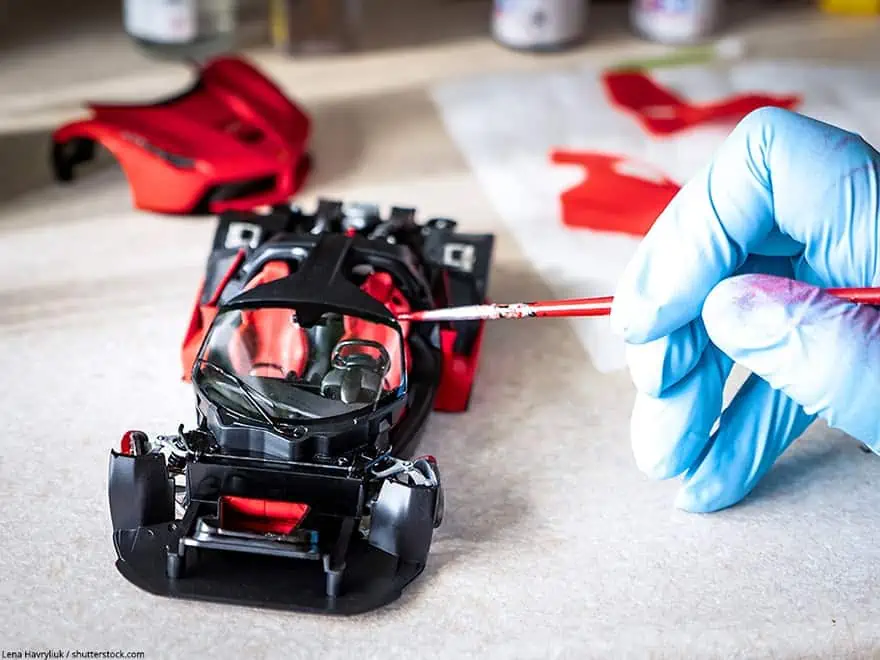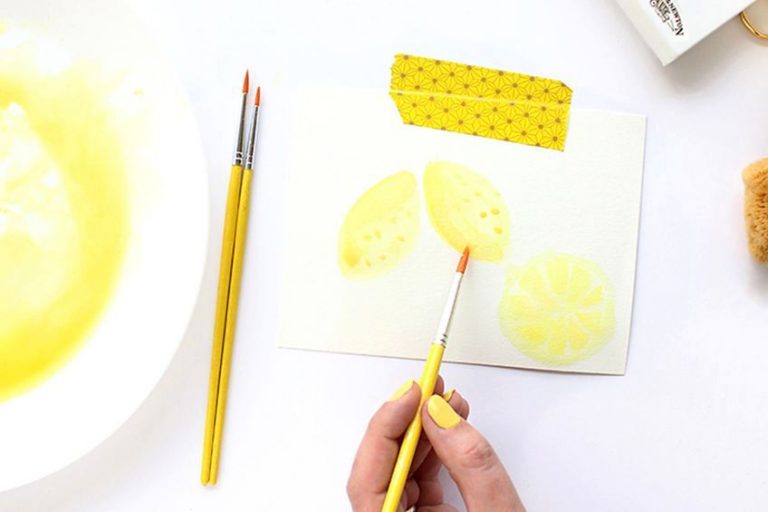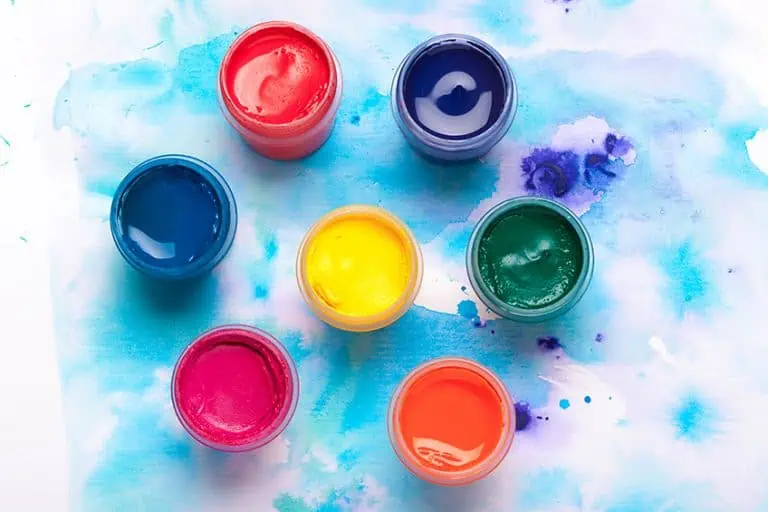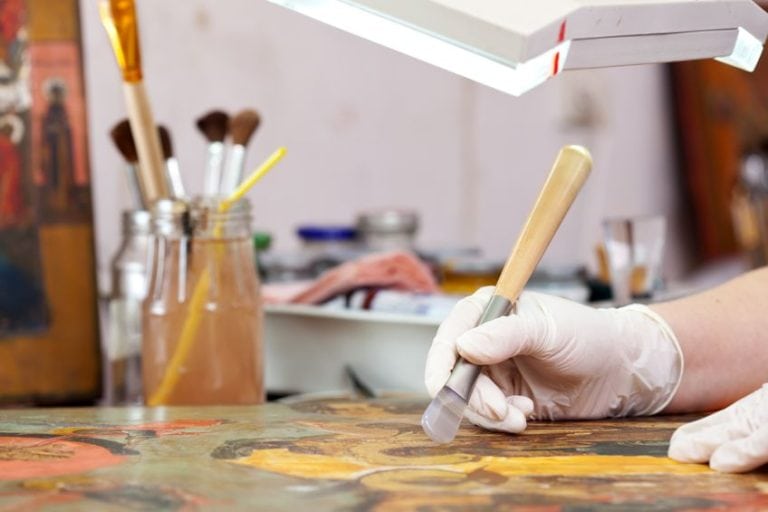Acrylic Paint on Plastic – Will Acrylic Paint Stick to Plastic?
This post may contain affiliate links. We may earn a small commission from purchases made through them, at no additional cost to you.
Acrylic paint is popular because it is so versatile and is a safe option when compared to other paints. But will acrylic paint stick to plastic? This type of paint is not made to stick to plastic and works best on a more porous surface like wood or paper. When applied to plastic, it will not have the staying power, especially if the item is handled often. However, by using compatible base coats, primers, and sealants, you can use acrylic paint for plastic.
Table of Contents
Will Acrylic Paint Stick to Plastic?
Plastic is a non-porous and smooth surface, which is why painting plastic with acrylic paint is difficult. There is nothing the paint can grab onto, so you need to prepare the surface for painting. If you do not do any preparation and just start painting, the paint will peel and chip. Another reason paint does not stick to surfaces is if it is contaminated or dirty. So, the first step would be to clean the surface. You can purchase degreaser and cleaners, or simply wash the plastic surface with some warm soapy water and let it dry.
There are quite a lot of different plastics out there and acrylic paint might work better on some and not at all on others. For example, the craft acrylic paints will need a primer plastic surface to stick to any plastic. Some other plastics that acrylic paint will not stick to at all include polypropylene, which has the recycling logo of number 5 inside a triangle displayed on the plastic item. Also, polyethylene with the numbers two and four do not provide a good surface for acrylic paints. Acrylic paint will also not adhere to Teflon, nylon, and silicon.
In order for the acrylic paint to stick, you will need to prepare the surface by lightly sanding the plastic surfaces, applying a base coat or primer. The base coat must be a paint that is specifically made for plastic surfaces, then you can apply the acrylic paint over that. If using primer, it should also be designed for working on plastics. To provide even more durability, applying a clear sealant will do the job. A sealer might not be necessary; however, it does provide more permanent results. This is especially needed when it comes to painting outdoor plastic items. For convenience and easy use, you can get spray sealers.
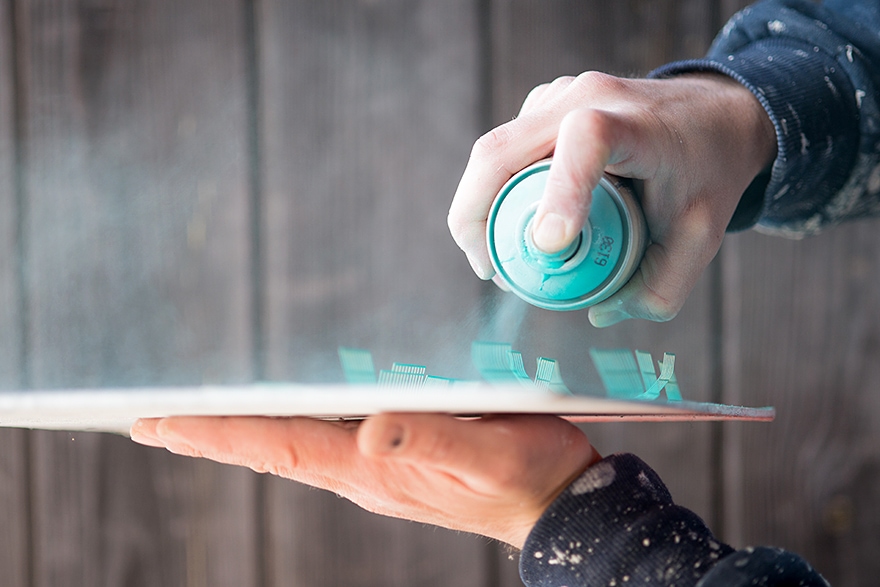
Guide to Painting Plastic with Acrylic Paint
The plastic item you have at home, maybe it is a piece of furniture piece or miniature model, and you want to use acrylic paint for plastic. You can easily change how the item looks, even make it appear metallic. However, plastic does require preparation, otherwise, the whole paint job will be for nothing.
Preparing the Plastic Surface
To improve the final finish, it is a good idea to clean and if needed degrease the plastic surface. In most cases, some soap and water should do the job. Allow the item to dry and then you can lightly sand the surface to get rid of any coatings and make it more receptive to the primer. 180 to 220-grit sandpaper can be used for this purpose. Using a damp cloth, wipe any dust away. You can then use some rubbing alcohol to wipe the surface and let the item dry properly.
Applying a Primer
There are spray paints available that are specifically designed for plastics and do not need a primer. However, there might not be a color you want. So, you might want to consider regular acrylic paint for plastic. You will then need to apply one or two coats of primer for plastic. When spraying, make sure to cover or tape areas you do not want to be covered and preferably spray outside where there is plenty of air circulation. Otherwise, when spraying indoors, you must work in a well-ventilated area.
You should also use some gloves, protective eyewear, and a mask for protection. Hold the sprayer or can about 12 to 18-inches away and spray in even, parallel movements that overlap. Cover the entire surface and then let it dry for several hours or follow the instructions on the primer container.
The primer will provide an effective foundation for the paint. Spraying primer does provide a more even application, however, you can also brush primer on. When using the brush-on primers, you need a little patience as you do not want to leave any brush marks or bubbles. Apply thin coats of primer with a synthetic brush and let each layer dry thoroughly before applying another. Two to three coats might be necessary.

Most Popular Primer for Plastic: KRYLON ColorMaster
The Krylon ColorMaster Paint and Primer dries quickly in only 10 minutes and provides a great smooth finish. The product comes in many different colors including clear and it can be applied to a variety of surfaces like plastic, metal, wood, and lots more. You also have various options to choose from such as matte, gloss, satin, flat, semi-gloss, and semi-flat. Easy to use and control and helps to avoid any dripping while working.
- Dries in 10 minutes, suitable for indoor and outdoor
- Smooths uneven surfaces , increases paint adhesion on Resin
- Ensures true paint color is achieved
PROS
- Can be applied to surfaces indoors as well as outdoors
- Durable
- Easy and quick coverage
- No dripping
- Variety of finishes
- Quick-drying
- Can be used as primer and paint
CONS
- You need to prepare your plastic surface properly before application
- Has an odor so work in a well-ventilated space
- Might not be as glossy as anticipated
Acrylic Painting on Plastic
When using acrylic painting on plastic, you can follow a similar process when preparing the work environment. The work space should be well-ventilated and use a mask and protective eyewear when spraying. Also, cover and tape off any areas you do not want paint on. Some paints need to be prepared before use, always check the paint product for directions. You will need to shake spray cans before using them so they will apply smoother and more evenly. Hold the spray container perpendicular to the surface and apply more than one thin coat, rather than one thick coat. You might also want to thin acrylic paint to make it creamier in consistency if applying with a brush. This will help to lessen any brush marks and produces a smoother finish.
You will need to apply two to three coats of paint and wait for each coat to dry before applying the next layer. Most paints dry in around 15 to 20 minutes and once the final coat has been applied, leave for 24 hours to dry properly. You can peel any tape away once you are finished painting before it dries. You can then also add some details onto the painted surface using stencils or adding your own designs.

Best Metallic Spray Paint: KRYLON
The Krylon Metallic Spray Paint will give your surface a beautiful shimmer metallic shine. The product can be used on different surfaces both indoors and outdoors. Available in a number of different colors, the spray paint is quick-drying and offers a stunning elegance to any surface. The metallic spray will provide added dimension and a modern look.
- Use it on wood metal craft foam glass wicker pottery ceramic masonry and more
- This package contains one 11.5oz can of spray paint
- Available in a variety of colors each sold separately
PROS
- Quick-drying
- Good coverage
- Unique shimmer effect
- Durable
CONS
- May require more than one coat for desired results
- It may not be best for larger surfaces
Applying a Sealer to Acrylic Paint on Plastic
When using acrylic paint on plastic, a clear acrylic sealer can help to finish the job off by offering more protection and making sure the paint stays where you applied it. A spray sealer is more convenient and is used in much the same way as the primer and spray paint. You can also get different sheens from matte to satin and gloss. Apply the sealer only once the paint has thoroughly dried. One coat should be enough; however, you can apply a second coat for a plastic item that is going to be exposed to more severe conditions. Wait and let the first layer dry, then you can apply the second layer.
Most Popular Acrylic Sealer: ALEENE’S Acrylic Sealer
The Aleene’s acrylic sealer will give your painted plastic surface a clear and protective coat. When applying the sealer, it goes on clear and will dry to a gloss finish. Easily used on interior and outdoor surfaces. Easy to spray on and gives a smooth and even finish.
- Acrylic sealer spray provide a protective, clear finish
- Give a glossy luster to virtually any indoor or outdoor project
- A durable protective finish
PROS
- Easy to use and quick-drying
- Goes on clear and dries to a glossy finish
- Provides a durable coat that will not yellow
CONS
- Strong odor and fumes
Tips for Acrylic Painting on Plastic
Whenever it comes to arts, crafts, and other do-it-yourself projects, many have already been there and done that. Thankfully, some are willing to share their experience and tips in the hopes of helping others improve their results and avoid problems. The same applies to acrylic paint for plastic, so let us have a look at a few tips that can help you out.
- Purchase reliable quality painters tape
- Make sure the tape is flat and no paint can seep through
- Peel off the tape straight away after you have finished painting to avoid the dried paint from peeling off with the tape
- Cover areas you do not want paint on because when spraying, there are tiny droplets that can remain in the air and can reach further than you might think
- Always use a primer, especially if the item is going to be handled or used a lot
- Try using a liquid sander instead of sandpaper
- Test out your spray paint before using it
- Do not apply paint to a too warm surface to avoid ‘orange peel’
How to Test Paint and Primer Compatibility
When purchasing your paint and primer, they should be compatible. However, if you have a primer that is specifically designed for a particular surface, you should not have a problem with the paint. If, for some reason, you are unsure about this, here is how you can test it out.
- Select a test surface and spray on the primer
- Let the primer dry properly and then add your paint and let dry
- Once thoroughly dry, take a sharp object and make a visible scratch mark on the surface
- Place some tape over the scratch mark and pull it off. If you observe the paint remaining behind, the primer and paintwork. If not, the paint will peel off

Spray Painting Plastic Ideas
Now that you have the basic understanding of painting plastic with acrylic paint, you might want to go into your garage or around the house to find plastic items and give them new life. To inspire you, here are some spray painting on plastic ideas.
- The first ideas is a popular one, giving your plastic chairs a makeover, or any plastic furniture you might have both for indoor and outdoor use
- Painting miniature plastic models
- How about painting over an old plastic dollhouse
- Plastic plant pots
- Toys
- Transform your drab old dustbin into something more colorful
- Plastic bottles and jars
- All kinds of plastic storage boxes or containers
- Go to a thrift store and have a look around, you can paint and create some great plastic home décor items

How to Paint a Plastic Flower Pot
This is a simple and easy idea to brighten up a plastic flower pot which you can use to add as a unique décor item around the house. Painting a flower pot is also a wonderful gifting idea. This is also a small item and great as a cheap beginner project. Let us get started.
- Make sure the pot is clean by wiping it down with a damp cloth
- If it is a really old pot, you might want to lightly sand it
- Wipe the pot down again with some rubbing alcohol to remove any dust and let it stand a little so it can dry
- Place the plastic pot on top of a cinder block or other surface so that you can do the job more efficiently and get to the entire surface
- Apply your chosen primer if using acrylic paint as this is necessary for a more durable finish
- Wait for the primer to dry and then apply your acrylic paint
- Let the paint dry for about 20 minutes and apply another coat if necessary and leave to dry properly
- You can paint on designs in another color using a stencil or go freehand with a permanent white marker
- Geometric designs are quite popular
Working with a spray paint can be a learning process, there are a few things you should and should not do. So, to help you understand how to work with spray paint and get the job done right, here are a few guidelines:
- Work outside where there is good air ventilation which helps to disperse the paint particles that tend to hang around in the air while spraying
- Avoid working when the wind is blowing too much
- Do not paint in the hot sun, rather find a spot that is in the shade somewhere
- Always shake the paint container before using so you get a smooth and even application
- Do not rush the paint job, make sure to use slow and smooth strokes to get even coverage to prevent the paint from building up too much
- During the painting process, you can shake the container every so often

Take a look at our how to paint plastic with acrylic paint webstory here!
Frequently Asked Questions
Will Acrylic Paint Stick to Plastic?
Acrylic paint is best used on porous surfaces like wood, however, with a bit of preparation, a primer, and a sealer, you can paint on plastic. Acrylic paints will definitely need a primer, but there are specially formulated paints that are designed for use on plastic and do not require a primer.
Can you Make Acrylic Paints Permanent on Plastic?
Follow all the steps for applying acrylic paint on plastic by cleaning the surface, applying a primer, painting, and then applying a sealer.
Should you Prepare Plastic before Painting?
To help level the surface and get rid of flaws, sanding will prepare the surface of plastic for the best finish. Sanding also helps to create more surface area for better paint adhesion.
What Application Methods are Best for Painting Plastic?
Spray painting plastic is the easiest and quickest method as it provides smooth and even coverage. However, you can also brush on paints, you will just have to be careful not to apply it too thick and try to avoid any brush marks. Although, you will need a mask, protective eyewear, and gloves when spray painting, and working in a space that has enough air circulation is essential.
In 2005, Charlene completed her wellness degrees in therapeutic aromatherapy and reflexology at the International School of Reflexology and Meridian Therapy. She worked for a company offering corporate wellness programs for several years before opening her own therapy practice. In 2015, she was asked by a digital marketer friend to join her company as a content creator, and it was here that she discovered her enthusiasm for writing. Since entering the world of content creation, she has gained a lot of experience over the years writing about various topics such as beauty, health, wellness, travel, crafting, and much more. Due to various circumstances, she had to give up her therapy practice and now works as a freelance writer. Since she is a very creative person and as a balance to writing likes to be active in various areas of art and crafts, the activity at acrylgiessen.com is perfect for her to contribute their knowledge and experience in various creative topics.
Learn more about Charlene Lewis and about us.
